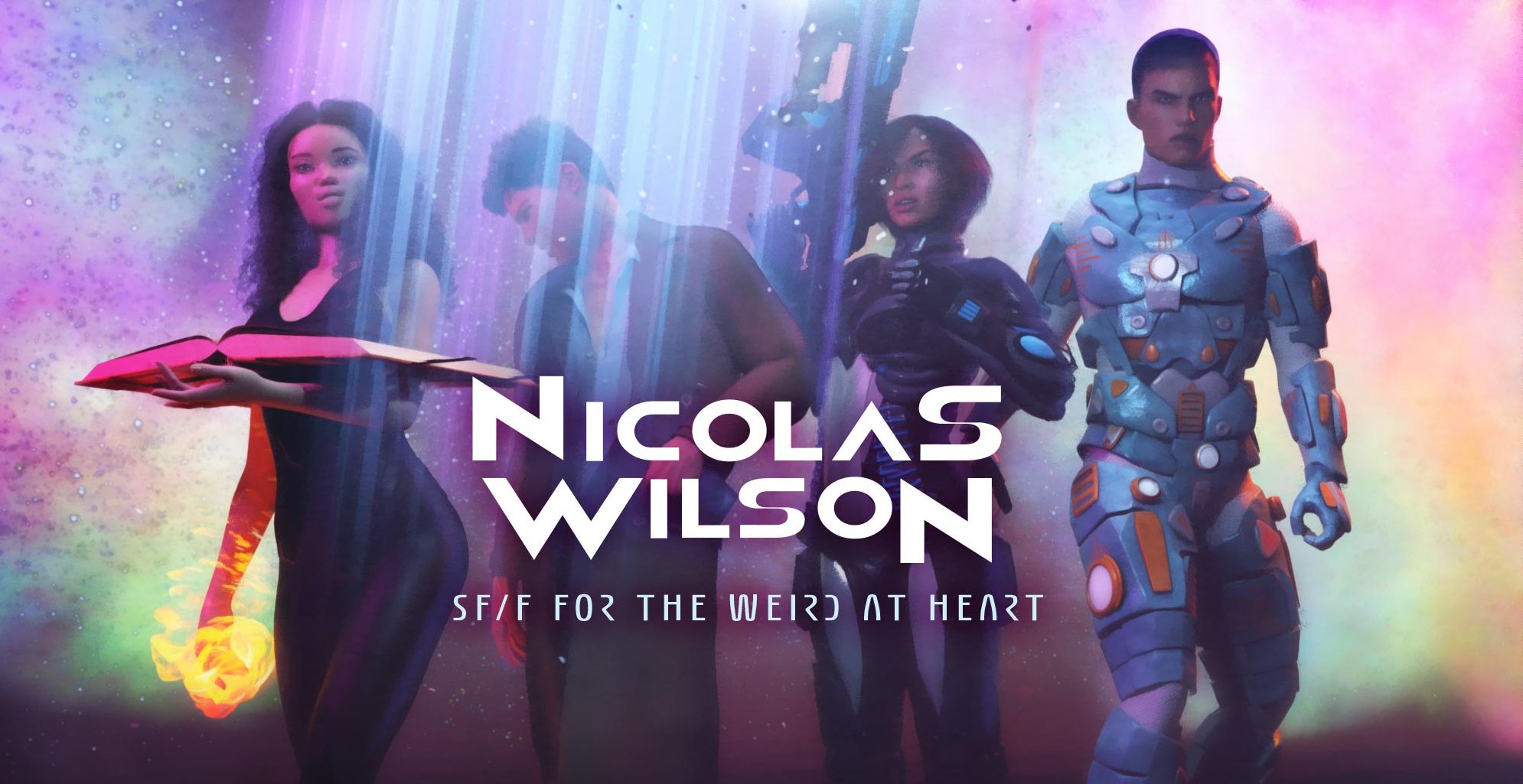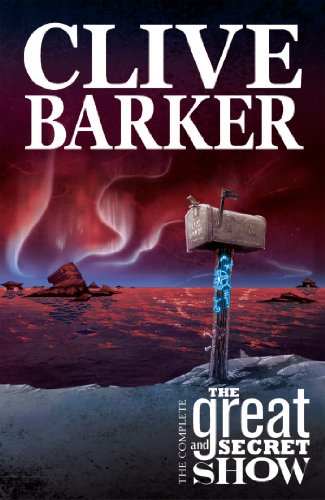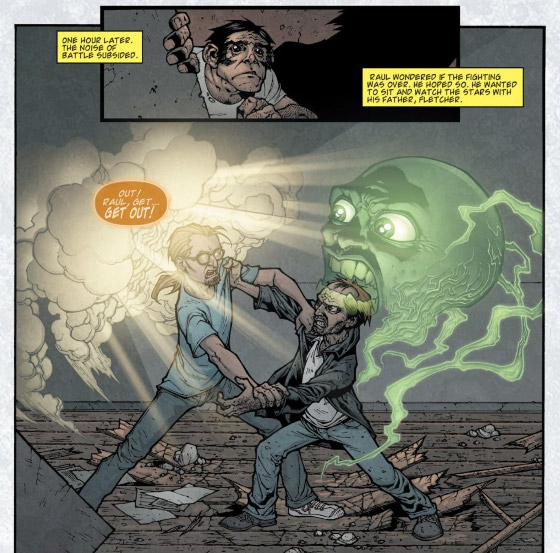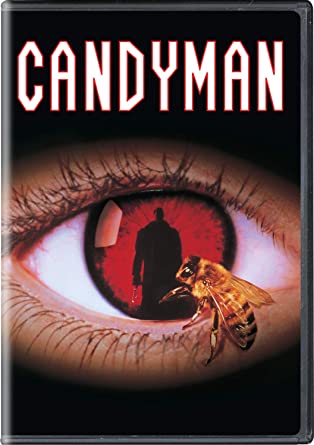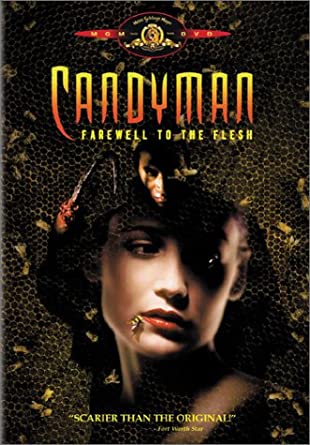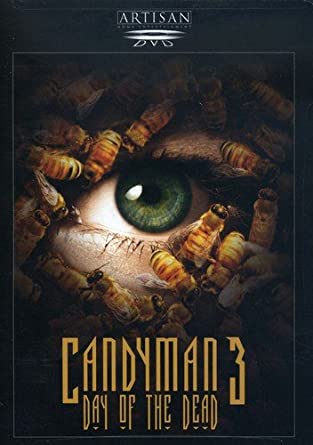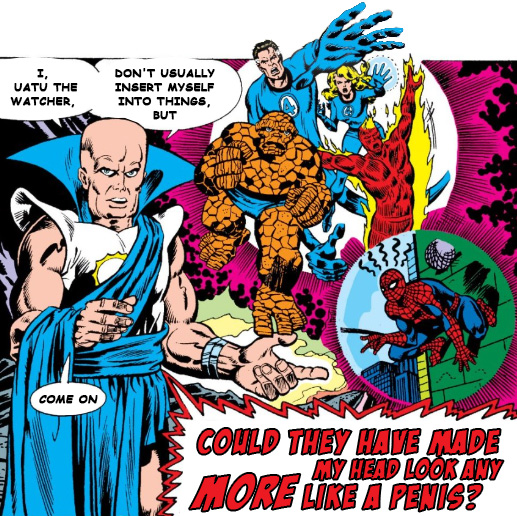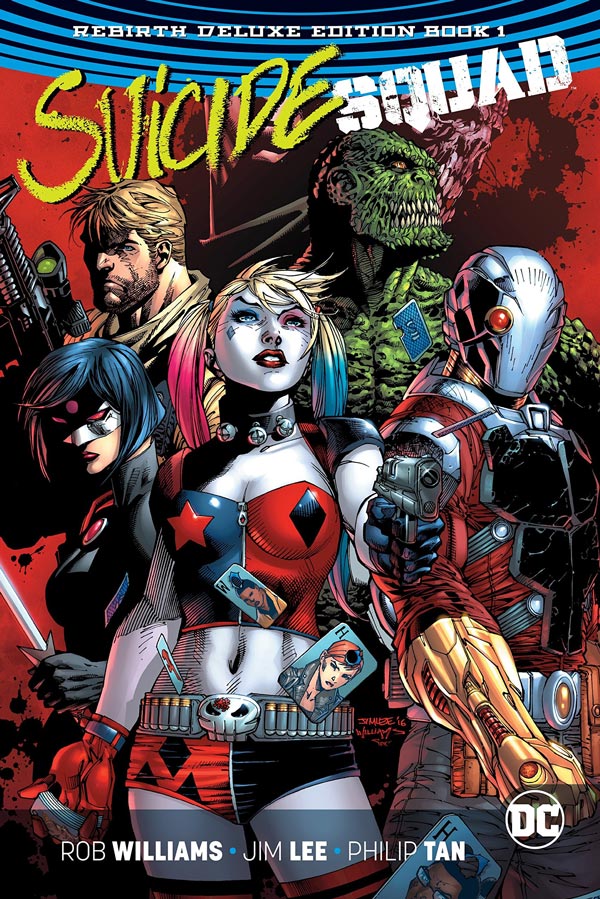It’s pretty good.
Crap.
You want to know more than that, don’t you? It mostly works.
First of all, I’m new to this, and I’ll likely spoil things, because I don’t have a good handle on what constitutes a spoiler to the broader audience. So if you want to go in fresh and covered in placenta like a newborn, don’t read further (I can’t help you with the placenta part, sorry); if you’re on the fence, trying to decide whether or not to watch it, well, I already told you your answer. I’ll try to be light on spoilers, but I’m going to discuss what works in the plot and the characterization, so I’m sure I’ll cross at least someone’s line about details. You’ve been warned.
What Doesn’t Work
I’ll start with the things that don’t quite work: the movie kills half its misfits within the first fifteen minutes. That means that you don’t get enough time with them to care about them, it means you don’t even really get to see what makes any of them tick. These characters function as a mislead, one that at least borders on mean-spirited. To be fair, I laughed a lot; for the first chunk of the movie, its black, bleak little heart was beating in time with mine. But ultimately at least some of these deaths feel flat; better executions of this part of the concept like Rogue One or the Dirty Dozen make you spend enough time with the characters to start to care about them, to make it hurt more when the characters meet an ignominious end. But there are worse executions, too, and it’s a balancing act: make us care too much and we’ll never forgive you for murdering our faves, and it’s probably better to cut their time short than break our hearts.
The other big, grinding piece is that the movie doesn’t quite congeal. There’s lots of really great little character beats and emotional moments, but it’s missing a pass or two on the script to have really made it feel like cohesive parts of a whole. I’m probably grading on a curve, here, because James Gunn is really good at this: every meticulous detail in his Guardians movies feel lovingly placed and necessary (aside from maybe the Gamora ‘whore’ ‘joke’ and possibly the odd prosthetics fixation of Rocket). It all flows together nicely, like a well-designed lazy river. And maybe that’s intentional; maybe as a war film this is supposed to be messy and chaotic, and what I’m noting is a design choice moreso than a flaw, so your mileage may indeed vary from mine.
I don’t think the face turn certain characters take work as
well as they could have, too. The remaining characters are literally moving in
the opposite direction and just kind of… stop, and decide to do the right
thing. This could have been done through dialog, or through the parallels of
team dynamics with their explicated family dynamics. Or relating the native
Corto Malteseans to those families (Polka Dot Man seems explicitly formed for
this, he literally sees his mother everywhere, and is a lunatic, so him
stamping his feet in the dirt and emotionally bleating out, “I’m not letting
her do to them what she did to me,” would have been a hell of a transition). It
would have taken twenty seconds of snappy dialog* to convince the characters
and the audience that this was a reasonable course, or even that it was the
necessary one from a self-preservation standpoint, a “There’s no way this
horror stays on this island” combined with an “and Earth is where I keep all my
stuff.” Maybe Gunn didn’t want to belabor the point, and there are plenty of
reasons (which may differ character to character) to choose to save the
day. But it is a choice, one made at great personal risk of Waller’s immediate
wrath, to say nothing of a fight they are almost certainly not all up to.
I’m not sure that Harley’s interlude works all that well, either; sure, it gives her kind of a quasi-arc, dealing with fallout from her relationship with the Joker… but the movie kind of grinds to a halt for it. It involves the nicer, more reasonable Presidente, and I even get that his exit from the movie is likely meant to be the ratcheting up of tension, as his less-hinged brother takes the reigns, but it feels like the movie makes you do that calculus yourself, in a way that didn’t feel paid off to me (maybe Gunn has started to believe his audience is smart enough to follow along, but if that’s the case, he forgets we’re also rats pressing buttons looking for the plot to reward our obsession with the occasional pellet or scritch on the head; an implicit part of the creator/audience dynamic is rewarding us for putting ideas together- while also delighting us with swerves we didn’t, but still add up). And it has its own pretty neat little action scene… but I don’t think it feels like it does enough, either for Harley or the movie’s plot, to justify the time it takes away from the central plot. I’m not saying you couldn’t have done something like this, but it feels like its own little Hobbs and Shaw in the middle of a larger Fast movie.
Polka Dot Man’s… condition. I can roll with him being screwy (even if his screwiness seems to overlap with Harley’s in ways that make both less unique). I’m even on board with the ways his relationship to his mother warps his relationship with his abilities and the world at large. But twice we see the ways his power seems to impact him physically… and it feels like it’s building either to pathos or a joke; it leans more towards the former, but it still doesn’t quite arc in a satisfying enough way to cash the substantial checks this character writes in the trailers (or maybe I just really wanted more Polka Dot Man).
Amanda Waller somehow not being in a straightjacket. Look, I adore the version of Waller in the Timmverse (I know Diniverse is a more clever/phonetically pleasing name, but it was Bruce Timm guiding it all those years, whereas Dini only worked in it sporadically). In that universe, Waller was cruel and efficient, Bond’s M if she’d been operating in black ops so long the lines between the good guys and the bad guys blurred to the point where she made no distinction, and accomplishing her mission was the only relevant conversation. Ayers’ version (at least in the released films) is a cartoon. She shoots half her staff because “they didn’t have clearance.” If they didn’t have clearance it’s because she let them work on a mission for which they didn’t have clearance… her fuck up, so her mass-murder is purely to cover her incompetence. It takes a character who was a “finish the mission at all costs for the greater good type” and makes her a petty, scheming bureaucrat. Which this movie, to its credit, hones in on like a laser. She spends lives pointlessly; fully half the deaths in the movie can be directly attributed to her being bad at her job while also refusing to loop in those better at it who are literally on the mission. Fully three of our leads have military experience, and yet her plan was to throw people into a woodchipper because that makes for a good distraction, right?
What does work
Okay, so maybe starting with what doesn’t work makes me sound too negative on the movie, because overall I enjoyed it. I’d probably put it behind the two Guardians movies, and probably just ahead of Slither for his third best to date (sorry, Super, but it’s a strong filmography, and someone has to take up the rear). Some of that is honestly just what’s on the tin: Guardians is a feel-good found-family operatic-space/action movie set in perhaps the most cohesive shared universe around (sorry Star Wars). Suicide Squad is meaner and leaner, a war movie set in a DC Universe that kind of hates us for existing at this point, but still has some heart, and enough of that found-family vibe is earned to make it a lot better than the first one, and even better than most films in the genre overall.
King Shark. Full stop. I loved the rendition of the soft-spoken but sweet-natured King Shark as voiced by Ron Funches on the Harley Quinn show (go watch it, damnit), but turning him into a full doofus (but just smart enough to be self-aware and want more) makes him basically Hulk if Hulk were interested primarily in eating those he smashes. His friendship with Ratcatcher feels adorable and genuine, and Sylvester Stallone asking, “Nom nom?” of vanquished foes is delightful in a way that I never thought I’d feel about cannibalism.
Peacemaker: he’s an extremist, but played completely to the hilt by John Cena. He feels like he’s going to be just another obnoxious ultra-right-wing d-bag- and he is also that- but he is the most glorious version of that that even though you should hate him, you will find yourself seriously considering watching his up-coming TV show, even knowing they are likely to turn the ultra-right-wing d-bag dial up to thirteen (from eleven, obviously). And his rivalry with Bloodsport is one of the highlights.
Ratcatcher’s paternal bond with Bloodsport. In the first movie, Harley and Deadshot had a weird relationship. Half of it was Deadshot warming to Harley as a surrogate for his daughter, but the other half was setting him up as a quasi-love-interest for her post-Joker life. I don’t think this was an Oscar Isaac in every scene of Star Wars, “wait, so now he’s going to be a love interest for whatever character he’s in this scene with, too, including his ball droid (no pun intended)?” or even leftover chemistry from the pair working together as a romantic partners in Focus. Quinn, as a shrink, would all but certainly have turned up her nose and diagnosed that confusion as an Elektra complex. But this movie makes Ratcatcher and Bloodsport work; she’s just sweet and naïve enough we understand how he’d see his daughter in her, and he’s just damaged enough that she can see her father in him, and both want to save the other, in more ways than one (just not that one, because it would be icky- and, no, I don’t mean in a taboo hot way, either , you weirdos).
The chapter breaks. Not only are they visually interesting, sometimes even beautiful, but they’re fun and keep the movie’s momentum going in ways that are inventive and entertaining.
The way the movie treats Waller. This one is likely the most spoilery I’m going to get, but when the movie finally steps back from Waller and basically says, “Maybe the real villain is standing in this room,” it works for the plot, it works for the characters involved, and it does the most heavy lifting bridging the continuity between movies as this quasi-sequel, sort-of reboot does. I wish it had gotten there earlier, but it happens when it needs to, in a way that might well have been forced by the very structure set up for it in the first Suicide Squad. Seriously, though, there’s no reasonable way a third movie happens after this; Waller’s mismanagement makes her casualty rate way too high. Either Waller needs to be full rogue at that point, and she’s the one the Squad goes after, maybe for running her own even more black ops variant of the Squad even further off the books and more corrupt, or they need to be offering a full pardon. Because ten years off what are for most of them multiple life sentences isn’t worth it if you’re told to walk through a wall of bullets, and increasingly that seems to be the case (her murder of Savant in particular seems exceedingly cruel and pointless).
But I want another Nom Nom. When?
*The snappy dialog that could have bettered the movie
You waded through my whole self-important, half-baked
criticism, so you deserve a treat. I’ll warn you, just knowing who is alive at
this point in the film is probably the biggest spoiler I’m posting, so don’t
continue reading if that’s a problem for you.
***
***
***
***
***
The remaining
members of the Suicide Squad are walking away from the menace, with a, “way
above my paygrade” look on their faces. Close on the mud, as Polka Dot Man
stamps his little white boot down.
POLKA DOT MAN
I’m not letting my mother do to them what she did to me.
Ratcatcher leans
into Bloodsport.
RATCATCHER
It won’t stay confined to this island.
Bloodsport sighs,
turning back towards the threat, glancing at the hard drive literally up his sleeve.
BLOODSPORT
It isn’t really saving my daughter if she gets her face eaten by a starfish.
The pair turn
together and walk towards Polka Dot Man. King Shark realizes everyone but him
and Harley have turned around and are walking in the opposite directions.
KING SHARK
Friends?
He runs towards them,
with all the bounce of a child on a playground, despite his size.
HARLEY
You’re all nuts.
Harley chokes back
emotion.
HARLEY (quieter)
I feel like I’ve found my people.
She runs after them. They line up for a dramatic shot, and exchange knowing glances.
***
And scene. I was ballparking 20 seconds, but that’s…. probably about right (might expand to a minute or so, depending on how long you let moments breath). Everyone gets a line, everyone gets their character beat in the moment… and the found family vibe only gets stronger.
If you want a little more from me, I reviewed the Jim Lee/Rob Williams Suicide Squad comic, or if you’re looking for more original fare, I pitched a sequel to Birds of Prey. And I should be back next Wednesday with another Relevant Review, this one about some What If issues.
